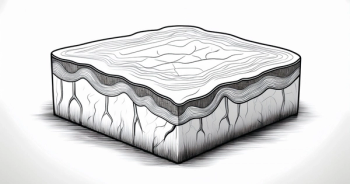
TMB and the Rationale Behind Targeting PD-1 in CSCC
Michael R. Migden, MD:The primary treatment options for patients with advanced CSCC include standard chemotherapyplatinum agents, taxanes, et cetera—orEGFR-targeted therapy, these are the EGFR-inhibitor agents and immunotherapy. Those are the broad systemic options for patients that are no longer good candidates for surgery and/or radiation. Of the 3 categories, immunotherapy is appearing to be more tolerable day by day. It’s not without its own risks, of course, but, in terms of day-by-day tolerability, it seems to be the best of those 3 categories.
So, why immunotherapy for cutaneous squamous cell carcinoma. Well, there are several reasons why this is a good disease to target with this approach. We know that the higher the tumor mutational burden, the believed better response to immunotherapy. It’s important to know that cutaneous squamous cell carcinoma has the highest tumor mutational burden of any cancer in the cancer genome atlas. The higher mutational burden is associated with what I believe to be a higher neoantigen formation, and that makes sense. So, you think there’s newer antigen formation with higher mutational burden, therefore the immune system might be able to recognize and attack this disease.
We know that patients who are immunosuppressed, such as solid organ transplant patients, have a higher incidence of nonmelanoma skin cancers and a disproportionately high increase in cutaneous squamous cell carcinoma. So, between the higher tumor mutational burden and the known immunosuppression factor, this appears to be a good target for this type of therapy. As far as the mechanism of using an antiPD-1 agent, if you look at a cell-cell interaction in a simplified way, look at the antigen-presenting cell (APC), and look at the tumor cell interacting with the T cell. You can think of there being a major on-switch to turn the immune system on, and that would be an antigen presented with an MHC [major histocompatibility complex] by the tumor cell binding to T-cell receptor on the T cell. That turns on T-cell mutated tumor destruction, so that’s the major on-switch.
But there’s a major off-switch as well, which the cancer leverages for survival, and this would be the expression of the PD-L1 [programmed cell death ligand 1] ligand which binds to the PD-1 receptor on the T cell. This is the major off-switch telling the immune system to turn off, which then turns off T-cell mediated tumor destruction. So, the strategy here in the PD-1, PD-L1 axis therapy is to block that interaction. That can be blocking the interaction at the site of the PD-L1 ligand expression with an antibody such as atezolizumab (Tecentriq), or it can be blocking the PD-1 receptor side. The examples would be pembrolizumab (Keytruda), nivolumab (Opdivo), and cemiplimab (Libtayo). When you interfere with the major off-switch, in effect, you turn on the T-cell mediated tumor destruction, so that’s mechanistically how antiPD-1 works.
When you look at the Cancer Genome Atlas, and there’s a nice graph of different tumor mutational burdens of different cancers, you see that cutaneous squamous cell carcinoma has the highest in the Cancer Genome Atlas. Interestingly, the basal cell has even a higher tumor mutational burden but it’s not part of the Cancer Genome Atlas. So, there have been studies also looking at new trials looking at PD-1s and case reports of efficacy looking at PD-1s for basal cell carcinoma, advanced forms of basal cell carcinoma.
Transcript edited for clarity.







































